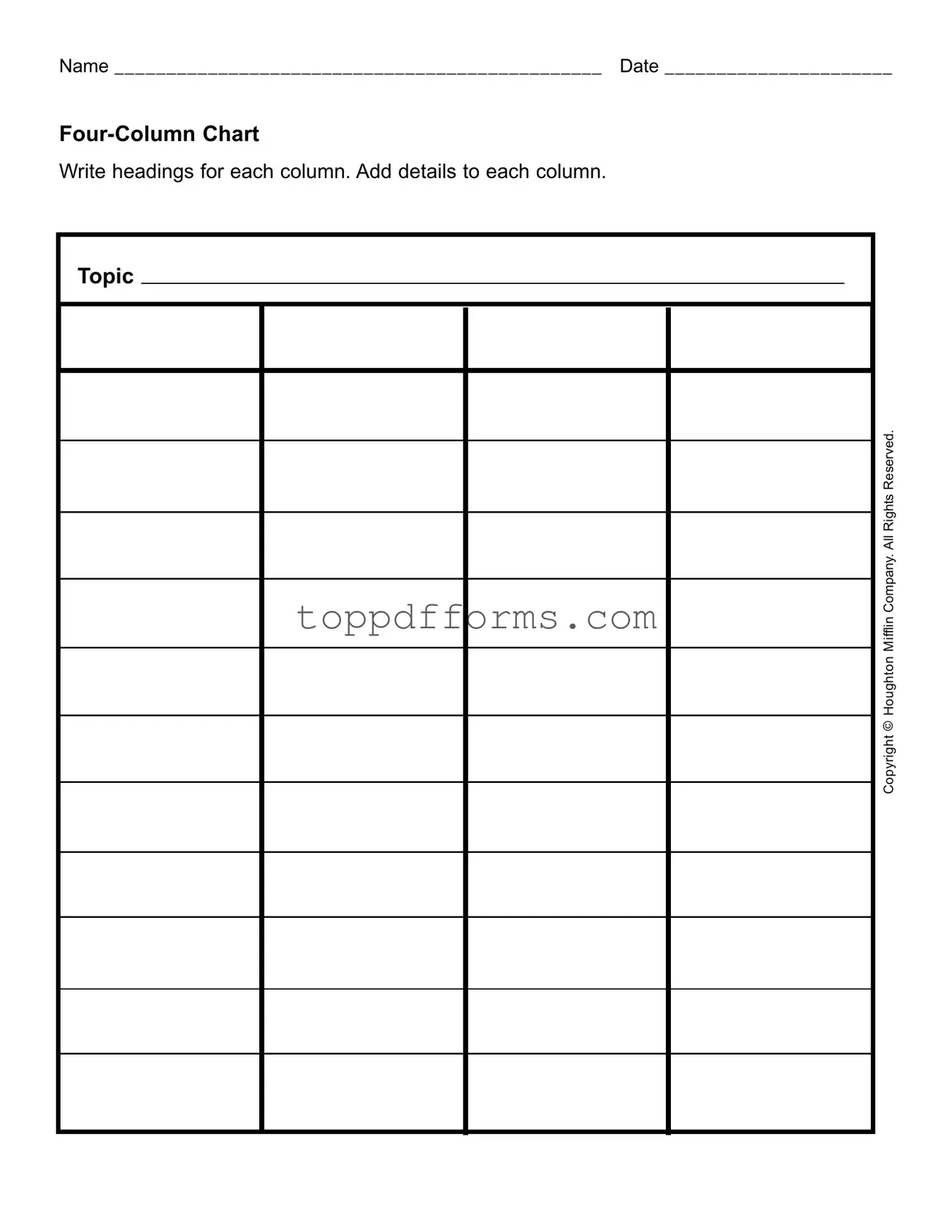What is the purpose of the Four Column Chart form?
The Four Column Chart form is designed to help individuals organize information in a clear and structured way. By dividing details into four distinct columns, users can categorize and compare data effectively. This format is especially useful for brainstorming, project planning, or summarizing key points on a specific topic.
How do I fill out the Four Column Chart form?
To fill out the Four Column Chart form, start by writing a title or topic at the top. Then, label each of the four columns with headings that reflect the categories you want to explore. Next, add relevant details under each heading. This might include facts, ideas, or observations related to the topic. The process encourages thoughtful engagement with the material.
Can I customize the headings of the columns?
Absolutely! The headings of the columns can and should be customized to fit your specific needs. Whether you are working on a project, conducting research, or organizing thoughts, feel free to choose headings that make sense for the information you are compiling. This flexibility is one of the strengths of the Four Column Chart.
Is there a recommended way to use the Four Column Chart in group settings?
In group settings, the Four Column Chart can serve as a collaborative tool. Start by brainstorming the topic together and agree on the headings for each column. Then, as a group, populate the chart with ideas and details. This approach promotes discussion and ensures that multiple perspectives are considered, enriching the overall content of the chart.
What types of topics are best suited for a Four Column Chart?
The Four Column Chart can be used for a wide variety of topics. It is particularly effective for comparing pros and cons, analyzing different viewpoints, or summarizing research findings. Whether you are studying a historical event, planning a business strategy, or evaluating a book, this form can help clarify your thoughts and organize your findings.
Can the Four Column Chart be used digitally?
Yes, the Four Column Chart can be easily adapted for digital use. Many word processing programs or spreadsheet applications allow you to create a table with four columns, making it simple to input and manipulate data electronically. This digital format can also facilitate sharing and collaboration among team members.
Where can I find more resources or examples of using a Four Column Chart?
Many educational websites and resources provide examples and templates for using a Four Column Chart. You can find tutorials, sample charts, and even printable templates online. Additionally, libraries and educational institutions may offer guides on effective data organization techniques, including the use of charts like this one.
